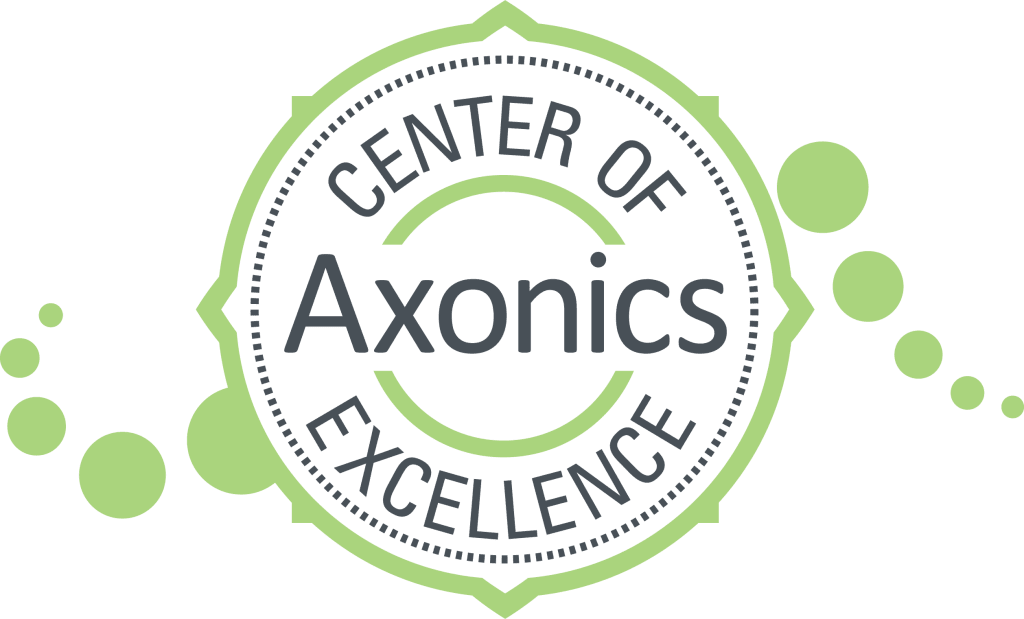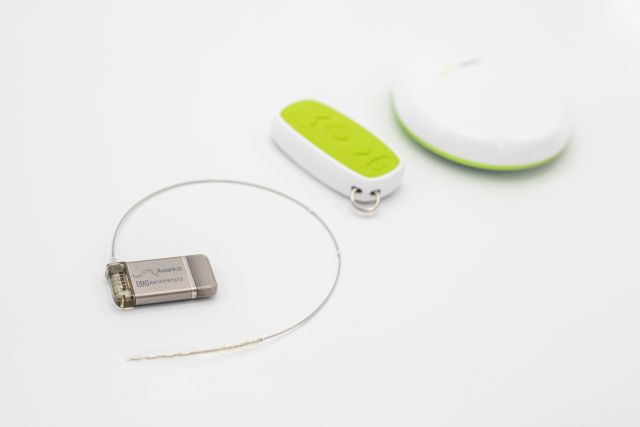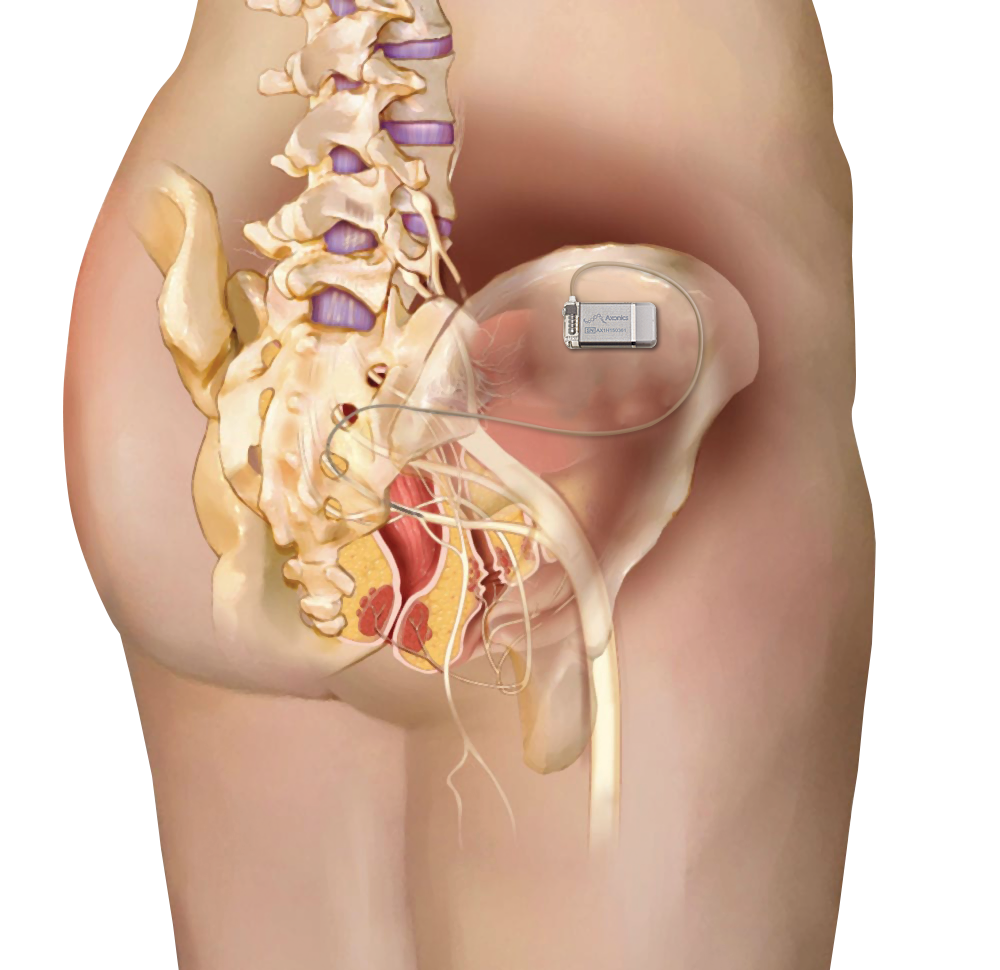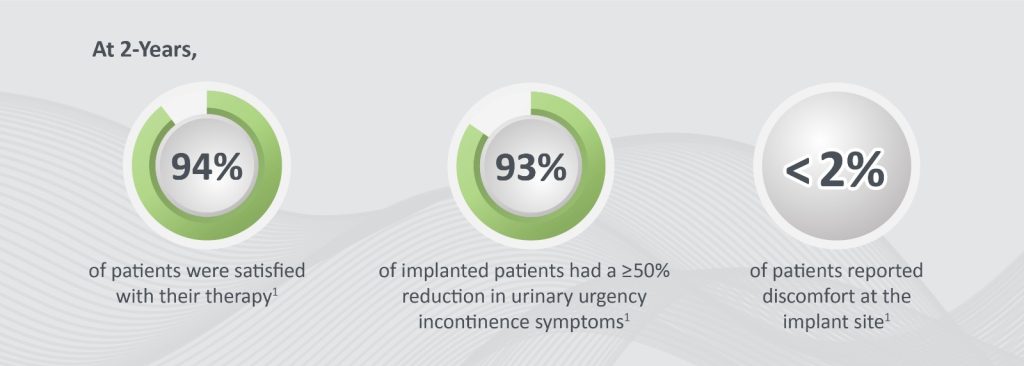Axonics Therapy
Axonics Therapy is a clinically proven solution for treating symptoms of overactive bladder (including urinary urgency incontinence), bowel (fecal) incontinence and urinary retention.1

If you suffer from these common symptoms and they impact your quality of life, Axonics Therapy is an advanced treatment option that may be right for you.
- Sudden, strong urges to urinate or pass stool that you can’t control
- Using the bathroom 8 or more times a day
- Bladder or bowel leaks
- Trouble urinating
At The Oregon Clinic in the Portland Metro area, Axonics Therapy is performed by urogynecologists Dr. Sarah Boyles and Dr. Bhumy Heliker and urologists Dr. Jin-Hee Kim and Dr. Jacob Richard.

Dr. Jin-Hee Kim and Dr. Jacob Richard have been designated as Axonics Center of Excellence by Axonics, Inc. The designation recognizes them for their expertise with Axonics Therapy, the quality of their patient outcomes, and their continued commitment to improving the lives of patients suffering from debilitating bladder and bowel symptoms.
How does Axonics Therapy work?
Axonics Therapy provides gentle stimulation to the sacral nerves that control the bladder and bowel, which can restore normal control and result in symptom improvement.
Watch a short video about how Axonics Therapy treats symptoms of overactive bladder, bowel incontinence and urinary retention.
What are the benefits of Axonics Therapy?

- Small Size: Safely delivers therapy with a miniaturized implant
- Long-Term Therapy: Designed to provide long-term symptom relief
- Full-Body MRI: Eligible for full-body MRI under approved conditions
- Clinically Proven: In a clinical study, Axonics Therapy provided sustained safety and symptom relief at 3 years2
How will I know if Axonics Therapy will work for me?
The Evaluation Step: To see if this treatment is right for you, you will undergo a short period of therapy using a temporary system. The evaluation period allows you to experience the level of symptom relief the therapy may provide before you commit to long-term therapy.
Long-term Therapy: If you and your doctor determine that Axonics is right for you, you will have an outpatient procedure where the miniaturized Axonics implant is placed just beneath the skin in the upper part of your buttock.

Clinically Proven. Patient Approved.
Backed by clinical studies, Axonics Therapy is clinically proven to help regain bladder and bowel control and deliver clinically meaningful improvement in quality of life.

Results and experiences may vary.
Important Safety Information:
Implantation and use of the Axonics System incurs risk beyond those normally associated with surgery, some of which may necessitate surgical intervention.
Results and experiences may vary and are unique to each patient. No promise or guarantee is made about specific results or experiences. Talk to your doctor about whether the Axonics System is right for you and to discuss the potential risks and benefits. Visit the Axonics page for more information about safety and potential risks.
Caution: Federal law (USA) restricts this device to sale and use by, or on the order of, a physician.
1. Pezzella A, et al. Neurourol Urodyn. 2021
2. Blok, B, et al. Neurourol Urodyn. 2020)
FREQUENTLY ASKED QUESTIONS
Overactive bladder—which your doctor may refer to as “OAB”—is an umbrella term that includes the frequent and urgent need to empty your bladder. One of the most common symptoms of overactive bladder is a sudden urge to urinate, resulting in unintentional urine loss.
Urinary incontinence is the inability to control when the bladder releases urine.
Urinary retention is the inability to empty the bladder. People with this condition are unable to urinate or they feel frequent urges but only urinate small amounts.
Fecal incontinence, or accidental bowel leakage, is a condition where people get sudden urges to pass stool and experience leakage of stool before they make it to the restroom.
Axonics Therapy is indicated for patients who have failed conservative treatments, such as lifestyle changes, physical therapy, or medications. It is up to you and your healthcare provider to determine if you are a good candidate for Axonics Therapy.
Axonics Therapy is an approved treatment for patients suffering with:
- Overactive bladder (OAB)
- Urinary frequency
- Urinary urgency incontinence (UUI)
- Fecal (bowel) incontinence
- Nonobstructive urinary retention (UR)